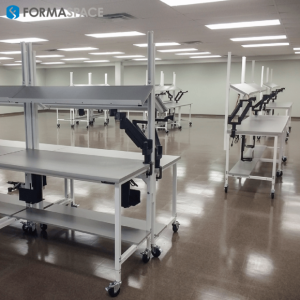Read more about the underlying causes of Opioid Use Disorder (OUD) and the use of Artificial Intelligence for addiction prevention therapies.
The unfortunate reality is that opioid-based painkillers – ranging from oxycodone to hydrocodone and fentanyl – can be highly addictive.”
— Formaspace
AUSTIN, TX, UNITED STATES, December 30, 2024 /EINPresswire.com/ -- Opioid Addiction – Known by Medical Professionals as “Opioid Use Disorder” (OUD) – Remains a Dangerous Crisis
Nearly 650,000 Americans died from
The rate of opioid-associated deaths also accelerated throughout the period – with 10 times more deaths in 2021 compared to 1999.
The unfortunate reality is that opioid-based painkillers – ranging from oxycodone to hydrocodone and fentanyl – can be highly addictive.
This deadly addiction to opioids, called “Opioid Use Disorder” (OUD) by healthcare providers – can affect both healthcare patients with legitimate opioid prescriptions for acute pain relief as well as illicit recreational drug users seeking a euphoric heroin or morphine-like drug high.
How Do Opioids Affect the Central Nervous System?
Opioids in the bloodstream target nerve cell receptors, called opioid receptors, located in the body and the brain. The opioid drug attaches to these receptors, which, among several effects, work to block the pain signals from reaching the brain.
The four main opioid receptors are delta (δ), kappa (κ), mu (μ), and the Nociceptin receptor (NOR). A fifth, zeta (ζ), affects tissue growth, including cancer cell proliferation.
Delta, kappa, and mu (which are found in the brain, the spinal cord, and the peripheral nervous system) exhibit analgesic (painkiller) effects.
On the other hand, the kappa and mu opioid receptors create the characteristic hallucinogenic / euphoric high that many opioid drug users become addicted to.
What Makes Opioids So Addictive and Dangerous?
Which of the opioid receptors are responsible for dependency on the drug, and how do people die from opioid drug overdoses?
Researchers believe that the delta and mu opioid receptors are primarily responsible for developing a physical dependence on opioid drugs. The NOR receptor can also help create a higher tolerance to mu opioid agonists, contributing to the overall addiction.
Symptoms of an active opioid overdose include slow or absent breathing, bluish skin, lips, or fingers, an unresponsive and/or limp body, and pin-point-sized pupils.
In these life-or-death emergencies, the mu opioid receptor is responsible for respiratory depression (e.g. reduced breathing) with the possible assistance of the delta receptor. The kappa and mu receptors are also responsible for the characteristic constricted, pin-point pupils (known as miosis) typically found in opioid overdose patients.
Unless anti-opioid treatment is administered quickly, overdosing patients can quickly die due to lack of breathing.
Naloxone Hydrochloride Can Help Save Patients from Fatal Opioid Overdoses
In 1961, Dr. Mozes J. Lewenstein and Dr. Jack Fishman, a Polish-born Nazi refugee, patented the opioid overdose antidote naloxone hydrochloride; it was approved for use by the FDA in 1971.
Naloxone hydrochloride is a drug that essentially “outcompetes” other opioids attempting to bind to opioid receptors in the body and the brain. The result is a temporary thirty-to-ninety-minute opioid shutdown period where the opioid drug in the bloodstream becomes ineffective, allowing first responders and medical providers a window of opportunity to revive a patient by restarting their breathing etc. Additional doses of naloxone hydrochloride may be necessary after the first dose wears off.
Read more...




No comments:
Post a Comment